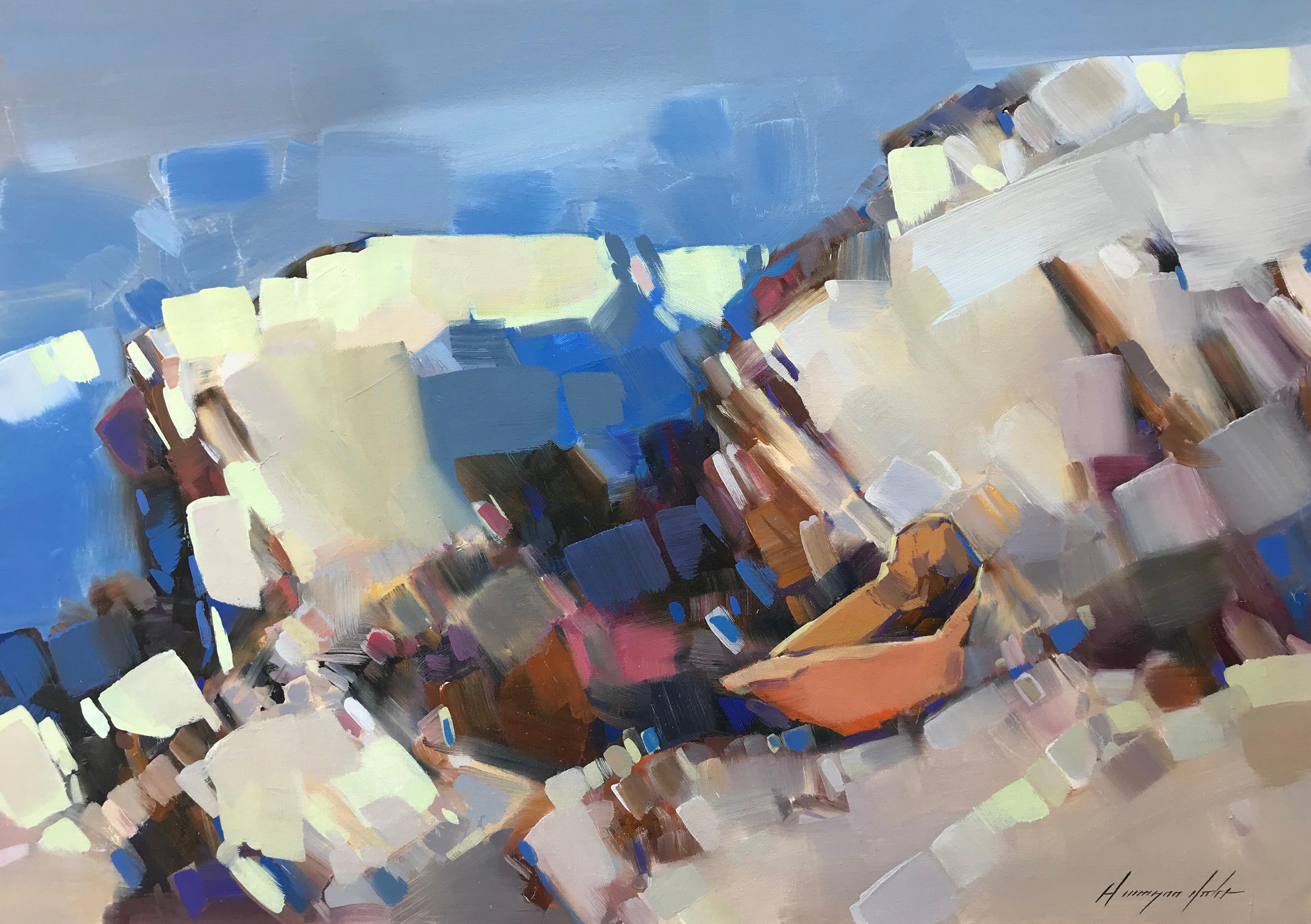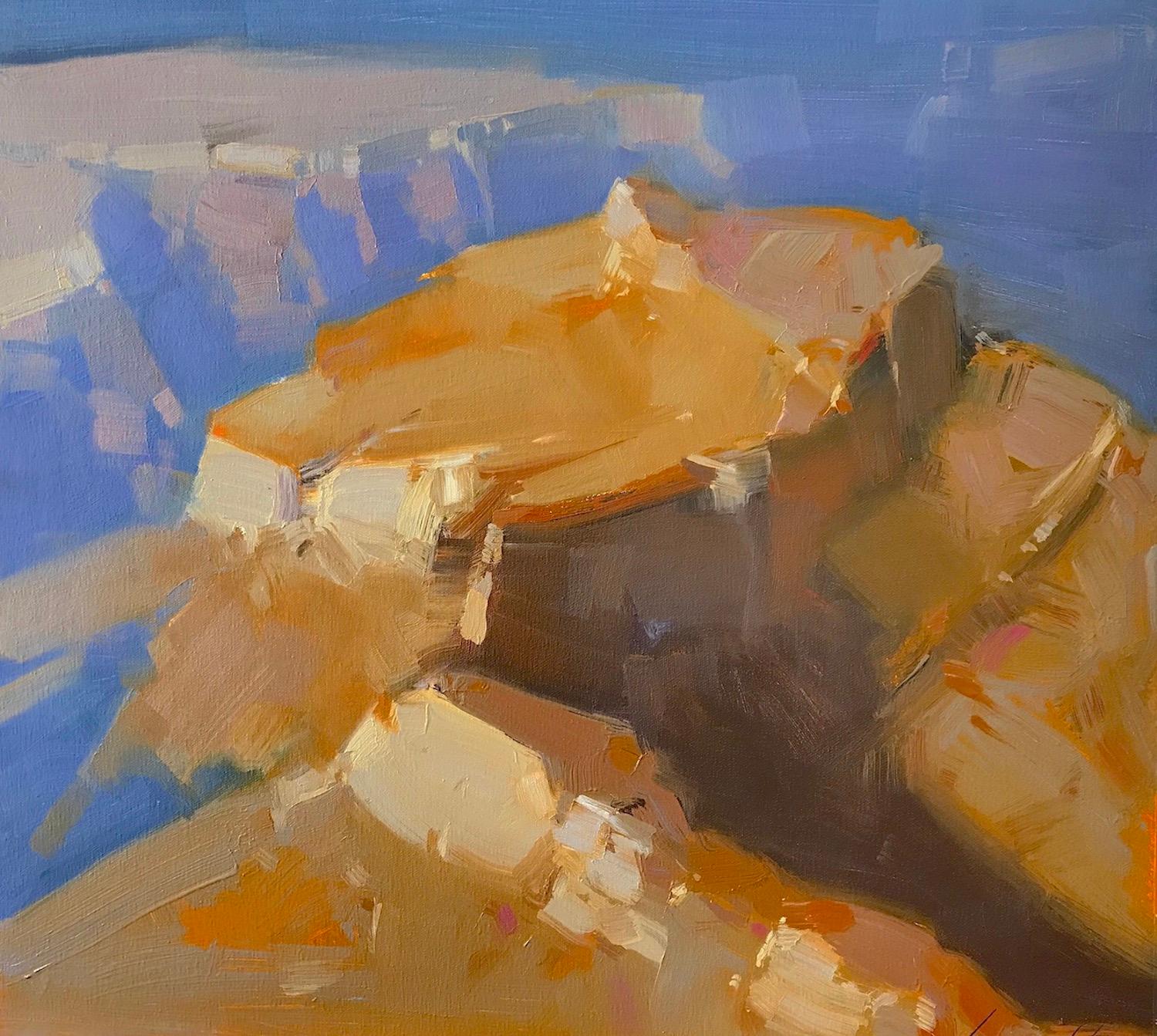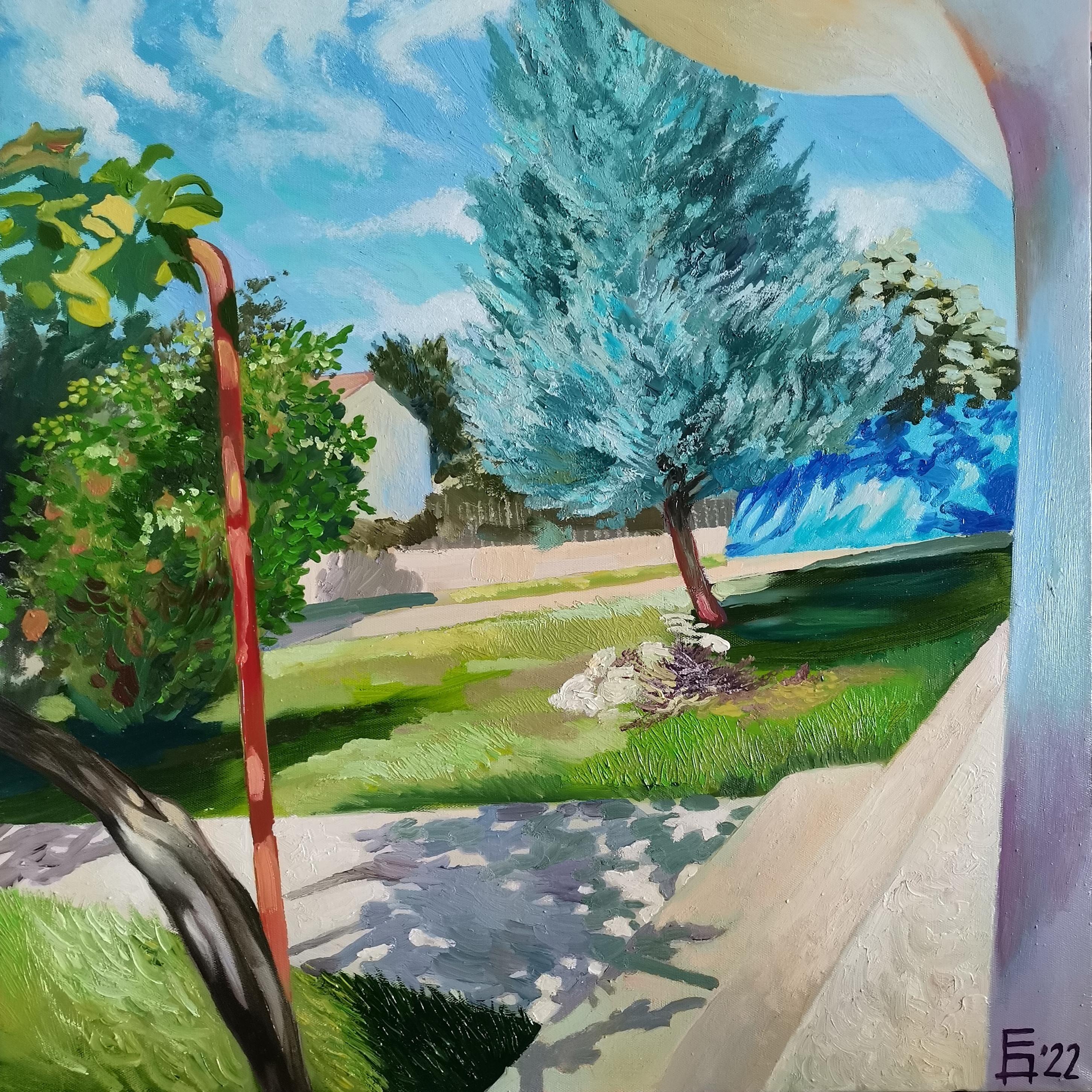Items Similar to Alfred Stevens, Brussels 1823 – 1906 Paris, Belgian, 'Clair de Lune sur la Mer'
Video Loading
Want more images or videos?
Request additional images or videos from the seller
1 of 12
Alfred StevensAlfred Stevens, Brussels 1823 – 1906 Paris, Belgian, 'Clair de Lune sur la Mer'1892
1892
About the Item
Stevens Alfred
Brussels 1823 – 1906 Paris
Belgian Painter
'Clair de Lune sur la Mer'
Signature: Signed lower right and dated 92
Medium: Oil on canvas
Dimensions: Image size 81 x 65 cm, frame size 97,50 x 81,50 cm
Provenance:
- Collection M. Klein, 1900 - Galerie Petit, Paris, 18 June 1926, nr. 22 - Private collection, Europe - De Vuyst, Belgium, 1998 - Galerie Kuppermans, Amsterdam - Private collection
- The Netherlands Exhibition - Exposition de l'oeuvre d'Alfred Stevens, Palais des Beaux Arts, Brussels, 1928
- Retrospective Alftred Stevens, Ecoile des Beaux Arts, Paris 1900, nr. 100
Literature:
- Alfred Stevens, Francois Boucger, Ed. Rieder Paris 1930, illustrated on page 36
- Documentation by Mrs Christiane Lefebre, 1998
Biography:
Alfred Émile Léopold Stevens (11 May 1823 – 24 August 1906) was a prominent Belgian painter renowned for his depictions of elegant modern women. His works, characterized by a realistic style and meticulous attention to detail, reveal the influence of 17th-century Dutch genre painting. While he initially gained attention for his social realist portrayal of the hardships faced by impoverished vagrants, he later achieved great critical and popular success with his portrayals of upper-middle class Parisian life. Notably, he often used the same models repeatedly, with some of them being identified in the infamous Book of the Courtesans, a confidential surveillance file maintained by the Paris vice squad, as noted by author Summer Brennan.
Stevens was born in Brussels, into a family deeply connected with the visual arts. His older brother Joseph (1816–1892) and his son Léopold (1866–1935) were both painters, while his other brother Arthur (1825–1899) was an art dealer and critic. His father, a veteran of the Napoleonic wars under the army of William I of the Netherlands, was an art collector with a notable collection of watercolors by Eugène Delacroix and other esteemed artists. Stevens’s upbringing was influenced by the environment of Café de l’Amitié, run by his maternal grandparents in Brussels, which served as a meeting place for prominent figures from the political, literary, and artistic spheres. Following the death of his father in 1837, Stevens left middle school to enroll at the Académie Royale des Beaux-Arts in Brussels. There, he came under the tutelage of François Navez, a Neo-Classical painter and former student of Jacques-Louis David, who was both the director of the academy and an old acquaintance of Stevens’s grandfather. Following a traditional curriculum, he initially drew from casts of classical sculptures and later transitioned to drawing from live models. In 1843, Stevens journeyed to Paris to join his already established brother, Joseph. He gained admission to the École des Beaux-Arts, the preeminent art school in Paris, although claims of him being a student of the director, Jean Auguste Dominique Ingres, are likely unfounded. One of his early works, The Pardon or Absolution (Hermitage, St. Petersburg), signed and dated 1849, showcased his mastery of a conventional naturalistic style influenced by 17th-century Dutch genre painting.
Stevens’s work was first publicly exhibited in 1851, when three of his paintings were featured at the Brussels Salon. He received a third-class medal at the Paris Salon in 1853, followed by a second-class medal at the Universal Exposition in Paris in 1855. His painting Ce qu’on appelle le vagabondage [What is called vagrancy] (Musée d’Orsay, Paris) garnered attention from Napoleon III, leading to a change in policy regarding the use of soldiers to remove the poor from the streets. Two other paintings displayed at the Salon in Antwerp in the same year, Chez soi or At Home and The Painter and his Model, introduced subjects from “la vie moderne” that became characteristic of his oeuvre: elegant young women dressed in contemporary fashion and artists in their studios. In 1857, Stevens made his first significant sale to a private collector when Consolation was purchased for a rumored 6,000 francs by the Berlin collector and dealer Ravéné. He and his brother also became part of the artistic milieu in Paris, frequenting salons hosted by Princess Mathilde and popular cafes, where they mingled with the likes of the Goncourt brothers, Théophile Gautier, and Alexandre Dumas. Stevens married Fanny Juliette Albertine Marie Hortense Blanc (1836-1891), a member of a wealthy Belgian family and a long-time acquaintance of the Stevens family, in 1858. The wedding was witnessed by the renowned painter Eugène Delacroix. The couple had four children: Leopold, Jean, Catherine, and Pierre. Stevens depicted his wife in numerous portraits, including Regrets and Memories. After her passing, he expressed enduring grief at her loss. During the 1860s, Stevens rose to considerable acclaim for his paintings of fashionable modern women.
His exhibits at the Salons in Paris and Brussels garnered favorable critical reception and attracted enthusiastic buyers. Notably, his work La Dame en Rose or Woman in Pink (Royal Museums of Fine Arts of Belgium, Brussels), completed in 1866, exemplified a blend of a stylishly attired woman in an interior setting with a detailed exploration of Japanese objects, reflecting his early enthusiasm for Japonisme. In 1863, he was awarded the Legion of Honor (Chevalier) by the French government. In 1867, he secured a first-class medal at the Universal Exposition in Paris, and his rank was elevated to Officer of the Legion of Honor. His social circle included prominent figures such as Édouard Manet, Edgar Degas, Charles Baudelaire, Berthe Morisot, James Abbott McNeill Whistler, Frédéric Bazille, and Puvis de Chavannes, and he was a regular patron of the Café Guerbois in Paris.
Stevens participated in the defense of Paris during the Franco-Prussian War but returned to Belgium with his family before the Paris Commune. They later returned to Paris, where Stevens continued to enjoy critical acclaim and success among collectors. In 1875, he purchased a grand house and garden on rue des Martyrs in Paris, which appeared in his paintings as well as those of other artists, such as Édouard Manet’s The Croquet Party. However, he was forced to vacate the property in 1880 to make way for the construction of a new street, which was eventually named after him. In 1878, he was appointed Commander of the Legion of Honor and was awarded another first-class medal at the Salon.
Despite earning a significant income from the sale of his paintings, Stevens faced financial difficulties during the 1880s due to a combination of poor investments and excessive spending. His financial strain was further compounded by the cost of summer trips to the seaside, which a doctor had advised him to take for health reasons in 1880. Consequently, when the Paris dealer Georges Petit offered him 50,000 francs to finance his vacations in exchange for paintings created during that period, Stevens agreed. This arrangement, spanning three years, resulted in the sea becoming a significant subject in his work, and over the course of his career, he produced numerous views of popular resorts along the Normandy coast and the Midi in the south. Many of these works were executed in a sketchy style influenced by the Impressionists.
Stevens also began teaching private students, including the renowned actress Sarah Bernhardt, who became a close friend, and the American artist William Merritt Chase. Other notable students included Berthe Art, Charles Bell Birch, Jules Cayron, Marie Collart-Henrotin, Louise De Hem, Harriet Campbell Foss, Georgette Meunier, Lilla Cabot Perry, Jean-Paul Sinibaldi, and Fernand Toussaint. The most significant work from the latter part of Stevens’s career was the monumental Panorama du Siècle, 1789–1889, which he painted in collaboration with Henri Gervex. In this project, Stevens painted the women and intricate details, while Gervex focused on the male figures, with the assistance of fifteen assistants. The painting garnered significant acclaim when it was exhibited at the International Exhibition in Paris in 1889.
Stevens received several notable tributes during his lifetime. In 1895, a large exhibition of his work was held in Brussels, followed by a retrospective exhibition at the Ecole des Beaux-Arts in Paris in 1900, marking the first retrospective dedicated to a living artist by the institution. Supported by patrons led by the Comtesse de Greffulhe, the exhibition achieved both social prestige and widespread acclaim. In 1905, Stevens was the only living artist featured in a retrospective exhibition of Belgian art in Brussels. Despite these accolades, he struggled to sell enough of his work to alleviate his financial difficulties. Having outlived his brothers and the majority of his friends, Stevens passed away in Paris in 1906, residing alone in modest accommodations while remaining in touch with his four children.
- Creator:Alfred Stevens (1823 - 1906)
- Creation Year:1892
- Dimensions:Height: 38.39 in (97.5 cm)Width: 32.09 in (81.5 cm)Depth: 3.94 in (10 cm)
- Medium:
- Movement & Style:
- Period:
- Condition:The artwork is elegantly displayed within a high-quality frame, impeccably preserved in its excellent condition. This piece is presented in a state suitable for immediate gallery hanging, having undergone professional cleaning and review.
- Gallery Location:Bruges, BE
- Reference Number:1stDibs: LU2006213599852
About the Seller
5.0
Vetted Seller
These experienced sellers undergo a comprehensive evaluation by our team of in-house experts.
Established in 1998
1stDibs seller since 2022
14 sales on 1stDibs
Typical response time: 1 to 2 days
- ShippingRetrieving quote...Ships From: Bruges, Belgium
- Return PolicyA return for this item may be initiated within 14 days of delivery.
More From This SellerView All
- Leo Van der Smissen, 1900 - 1966, Belgian Painter, End of Autumn in BrugesLocated in Bruges, BEEnd of Autumn in Bruges – Gruuthusebrug Van Der Smissen Leo Dendermonde 1900 – 1966 Bruges Belgian Painter Bruges School Signature: Signed bottom left and dated 1935 Medium: Oil on canvas Dimensions: Image size 101,50 x 121 cm Biography: Van der Smissen Leo was born in Dendermonde on June 20, in 1900. He lived in Bruges, and he was a Belgian painter and one of important Bruges School artists. His brother Frans Van der Smissen (1894-1964) was a sculptor. Leo was a painter of town views, sturdy of trees, landscapes, church interiors, still lifes, marines, interiors, portraits, and some nudes. He acts as a colourist, who practices sobriety. His preference, woodland scenes, a genre in which he has climbed to a solid refinement, particularly specific are the depiction of the tree trunks. His works, brushed concisely and boldly, betray a strong hand that bends the colour ranges to his will and he can adapt to all kinds of subjects. Leo studied at the Bruges Academy of Fine Arts (1913 – 1919) with master teacher and artist Flori Van Acker and won several first prizes there. He studied also at Ghent Academy of Fine Arts (1920 – 1921) with master teachers Godron and Karel Tremerie and later at Dendermonde Academy of Fine Arts (1923 – 1924). Initially strongly influenced by the style of Courtens and the Dendermonde School, under the guidance of painter Ferdinand Willaert he evolved towards to Luminism. In 1930 Leo was married and had three daughters, two children died in early age. Leo van der Smissen...Category
Early 20th Century Impressionist Landscape Paintings
MaterialsCanvas, Oil
- A Coastal View with Agave, Julien Stappers, Chenee 1875 – 1950, Belgian PainterLocated in Bruges, BEA Coastal View with Agave Stappers Julien Chenee 1875 – 1960 Belgian Painter Signature: Signed bottom right Medium: Oil on canvas Dimensions: Image size 33,50 x 42 cm, frame size 44 x 52,50 cm Biography: Stappers Julien was born in Chenee, Belgium in 1875. He was a painter of landscapes and town views but is most noted for his still life and florals and southern landscapes. Sunny colour palette and impressionist rendition. From 1894 – 1899, he was a student of De Vriendt...Category
Mid-20th Century Impressionist Landscape Paintings
MaterialsCanvas, Oil
- Chauvelon Gabriel, Nantes 1875 – ?, French Painter, Port of Tréboul, BretagneBy Gabriel ChauvelonLocated in Bruges, BEChauvelon Gabriel Nantes 1875 – ? French Painter Riverside Village – Port of Tréboul, Bretagne Signature: Signed bottom left Medium: Oil on canvas Dimensions: Image size 90 x 130 cm...Category
20th Century Impressionist Landscape Paintings
MaterialsCanvas, Oil
- Marcel Pire, 1913 – 1981, Belgian Painter, 'Wheat Field with Working Farmers'Located in Bruges, BEPire Marcel Brussels 1913 – 1981 Opheylissem Belgian Painter 'Wheat Field with Working Farmers' Signature: Signed lower right Medium: Oil on canvas Dimensions: Image size 100 x 120 ...Category
Early 20th Century Impressionist Landscape Paintings
MaterialsOil, Canvas
- Hunting in Fontainebleau, Georges Stein, Paris 1870 – 1955, French PainterLocated in Bruges, BEHunting in Fontainebleau, France Stein Georges Paris 1870 – 1955 French Painter Signature: Signed bottom left and placed Fontainebleau Medium: Oil on c...Category
Late 19th Century Impressionist Landscape Paintings
MaterialsCanvas, Oil
- 'Sunset in a Winter Forest' by Cornelis Kuijpers ( 1864 – 1932 ) Dutch PainterLocated in Bruges, BECornelis Kuijpers Gorinchem 1864 – 1932 Soest Dutch Painter 'Sunset in a Winter Forest' Signature: signed lower right ‘Cornelis Kuijpers’ Medium: oil on canvas Dimensions: image si...Category
Early 20th Century Impressionist Landscape Paintings
MaterialsCanvas, Oil
You May Also Like
- "Spring, Oakview"By Antonio Pietro MartinoLocated in Lambertville, NJJim’s of Lambertville is proud to offer this artwork by: Antonio Pietro Martino (1902 - 1988) Signed and dated lower right. Complemented by a period frame. Antonio Martino was ...Category
1920s American Impressionist Landscape Paintings
MaterialsCanvas, Oil
- White CliffsBy Vahe YeremyanLocated in Granada Hills, CAArtist: Vahe Yeremyan Work: Original Oil Painting, Handmade Artwork, One of a Kind Medium: Oil on Canvas Year: 2019 Style: Contemporary Art, Subject: White Cliffs, Size: 21.5" x...Category
2010s Impressionist Landscape Paintings
MaterialsCanvas, Oil
- Sedona View, Original oil Painting, Ready to HangBy Vahe YeremyanLocated in Granada Hills, CAArtist: Vahe Yeremyan Work: Original Oil Painting, Handmade Artwork, One of a Kind Medium: Oil on Canvas Year: 2020 Style: Impressionism, Subject: Sedona View, Size: 14" x 18" x ...Category
2010s Impressionist Landscape Paintings
MaterialsOil, Canvas
- Landscape with Farm Animals & FiguresBy Continental SchoolLocated in Milford, NHA fine 18th century Continental School landscape oil painting with animals including cows, horses, dogs, and chickens in a farm setting...Category
18th Century Impressionist Landscape Paintings
MaterialsCanvas, Oil, Board
- Grand Canyon, Original Oil painting, One of a kindBy Vahe YeremyanLocated in Granada Hills, CAARTIST: Vahe Yeremyan WORK: Original Oil Painting, Handmade artwork, One of a Kind MEDIUM: Oil on Canvas YEAR: 2018 STYLE: Impressionism SUBJECT: Grand Canyon...Category
2010s Impressionist Landscape Paintings
MaterialsOil, Canvas
- Albena - Landscape Painting Oil Green Blue White Grey Brown Black RedBy Eleonora DroumevaLocated in Sofia, BG"Albena" is a painting by the Bulgarian artist painter Maestro Eleonora Droumeva. About the artwork: TECHNIQUE: oil painting STYLE: Impressionist, Contemporary Edition : Unique, s...Category
2010s Impressionist Landscape Paintings
MaterialsCanvas, Oil



